6. After My Death (Kim Ui-seok, 2017, S. Korea)

One day, high school girl Kyeong-min goes missing. She seemed to jump off a bridge to her death, but without a body, or a suicide note, no conclusion can be drawn. The next day the police arrive at her school to investigate the matter. Soon it is revealed that a classmate of hers, Yeong-hee was the last to see her. With no direct answers visible, the girl soon becomes the victim of bullying in her school, instigated by the now discovered dead girl's mother and her classmates, who believe she is the one responsible for Kyeong-min's death, and violence soon takes over.
Yeong-hee tries to find out on her own what happened to the girl, but as the school and her family offer no support in the bullying she experiences, she decides to commit suicide herself, in the most horrible fashion.
Quite similarly to the Japanese films about the subject (“Confessions” comes to mind), Kim Ui-seok wraps his social comments in a mantle of mystery and violence, with the latter offering a number of shocking scenes, as the ones in Yeong-hee's house and the one in the funeral. Through this approach, that also uses Yeong-hee as medium into exploring the reasons teenagers commit suicide and retort to violence, Kim makes a rather harsh comment, which mainly focuses on teachers and schools in general, and parents.
Kim presents the former as an institution that just wants to save face and move on, hiding behind ceremony and rituals, while neglecting the actual needs of the students to the point of ignoring even the harsh events that take place here. Ignorance is also attributed to the parents, who seem to have no clue about what is going on with their children, as so eloquently portrayed by both Yeong-hee's father and the deceased's mother.
Buy This Title
7. Bleak Night (Yoon Sung-hyun, 2011, S. Korea)
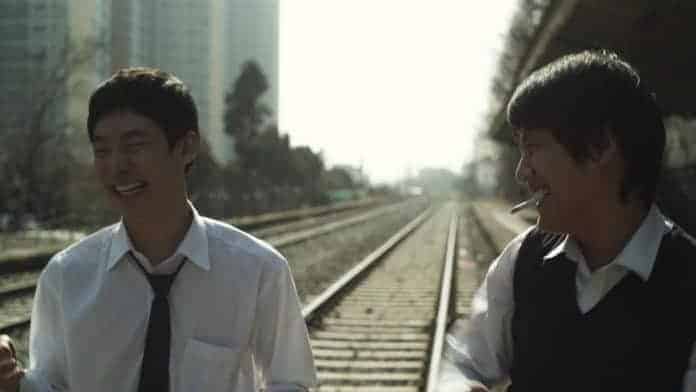
The story moves in two axes, one occurring after Ki-tae's death, with his estranged father searching for the reasons for his son's death, and one before, which explains the events that led to the incident. In the second axis, Ki-tae is somewhat of a leader of a “gang” consisting of a number of high school boys, with the protagonists being introvert “Becky” (actually Baek Hee-joon); Dong-yoon, who is the only one occasionally standing up to him and the only one having a girlfriend, Se-jeong; Jae-ho, who also works at his mother's flower shop and is his Ki-tae's main lackey. Ki-tae holds the first two in high esteem, although he occasionally bullies Becky. During an incident where he tries to find a girlfriend for him, the two have something of a fallout, which eventually escalates in violence, both between the two, and Ki-tae and Dong-yoon.
In the first axis, the boys have been estranged, as Becky has moved to another school and Se-jeong has dropped out of school and is nowhere to be found. As Ki-tae's father pressures them, the three remaining members meet once more, actually confronting what has happened.
Yoon Sung hyun pens and directs a film that takes a unique approach towards bullying and male friendship. In this case, the bully (Ki-tae) truly loves and cherishes his friends (Becky and Dong-yoon), but does not know any other way to show his feelings. Furthermore, after a fashion, the one bullied is actually him, although in psychological terms, by both the other two. This fact is magnificently portrayed in two very dramatic, one-on-one scenes, where Ki-tae obviously seeks for their forgiveness, but most of all, for their approval and their acknowledgement that they are his friends. This tactic is what sets apart “Bleak Night” from the plethora of school dramas regarding bullying, as, this time, the protagonist, and the one whose psychology is in the center of the story is the bully himself.
These two scenes highlight the level of acting in the film, with Lee Je-hoon as Ki-tae, Park Jeong-ming-I as Becky, and Seo Jun-young as Dong-yoon portraying magnificently their conflict. Lee in particular is astonishing, as his shock, his subsequent rage and his eventual grief from their attitude is portrayed in astonishing fashion. Park Jeong-ming-I is at his best when he is bullied, but not intimidated in any way and Seo Jun-young has his moment in the finale.
Another comment Yoon Sung hyun makes about bullying is that the cause of young people acting in that fashion usually derives from their parents.
Buy This Title

8. Mon Mon Mon Monsters (Giddens Ko, 2017, Taiwan)
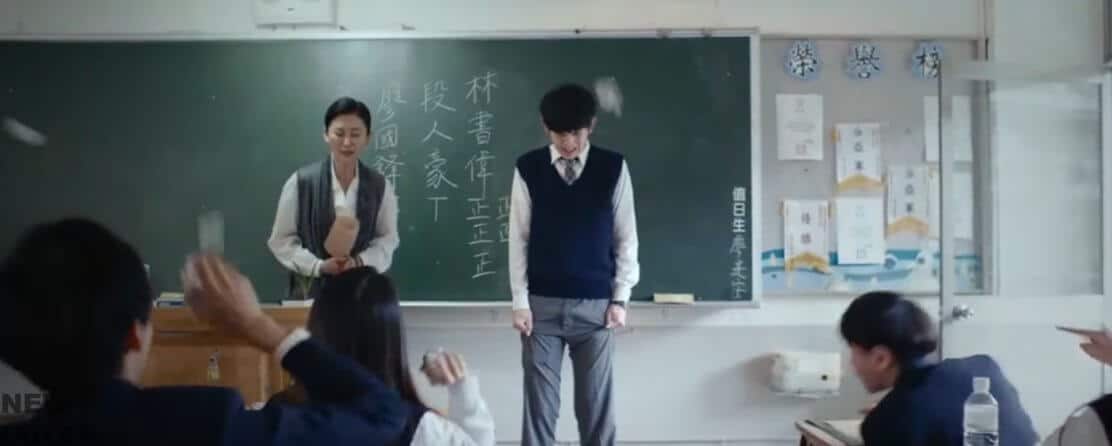
Lin Shu-wei is the archetypal nerd. He is shy, weak, a permanent victim to the bullies of the class, does not have any friends and always get the best grades. The movie starts with him being accused for stealing the class's treasury, with the leader of his “torturers”,
Tuan Ren-hao, humiliating him even more, to the amusement of his girlfriend, Si-hua, and of the rest of his group, Liao Kuo-feng, Yeh Wei-chu, who were the actual perpetrators.
Lin, having no alternative, turns to Mrs Lee, the homeroom teacher, who does not seem to care in particular, and instead forces him to confess the theft, and then, as a punishment, to spend some hours helping the elderly in an asylum, along with the actual culprits.
During their visit there, the students stumble upon a duo of man-eating monsters, and through a succession of extreme events, end up kidnapping the younger one, imprisoning it in their hideout, an abandoned space which was previously used for the maintenance of a pool. Thus begins a “game” of torturing the monster, which soon though, transforms into something very dangerous, as the sister of the creature is on their heels. At the same time, and despite the horrid occurrences, Lin begins to enjoy the company of his former (and current) “torturers”.
Giddens Ko directs a movie that combines fantasy/horror with surrealism in impressive fashion, in a narrative that unveils as a dream. Through this unusual, but rather entertaining approach, he manages to present a series of extreme, but also realistic social comments.
The role of teachers, bullying and in general the school environment are the most obvious, but as the story progresses, human nature, and particularly the way people can become worse than monsters becomes the central concept, along with crime and punishment.
Watch This Title
9. River's Edge (Isao Yukisada, 2018, Japan)
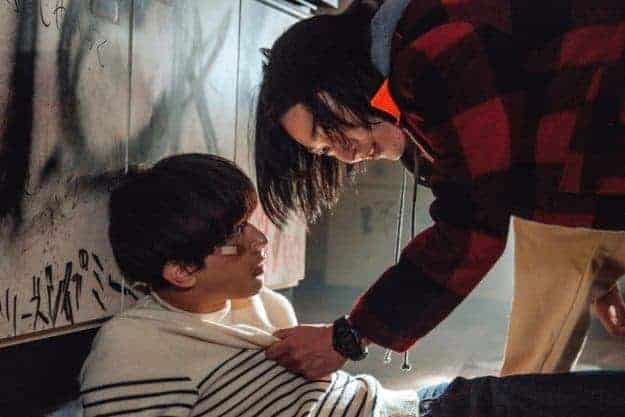
The story takes place in the 90's and revolves around a number of characters who attend the same high school. Haruna is a girl who appears detached from everything, despite the fact that she has a boyfriend, Kannonzaki, and is part of a gang of the three that also includes Rumi, a girl who has sex with mature men who shower her with expensive gifts, and another girl, who is the gossiper of the class. Ichiro is a homosexual boy who is constantly bullied and beaten, particularly from Kannonzaki, who seems to hold a grudge against him. Haruna realizes the fact and she repeatedly tries to save Ichiro, with the two of them forming a peculiar friendship. Ichiro eventually introduces Haruna to his “treasure”, the dead body of a man who has been rotting in the weeds in the edge of the river that passes through the city (thus the title) and the other friend of his, Kozue, a teen model with bulimic tendencies. The three of them also become a gang, with their relationship resulting in a number of shockwaves, particularly regarding Kannonzaki, and Kanna Tajima, a girl who is supposedly Ichiro's girlfriend, although their relationship is extremely one-sided. As angst, truth, and sex take over the various relationships, violence soon ensues.
Yukisada takes the somewhat far-fetched story of the original in order to direct a film that focuses on the kids of the era, and the consequences the lack of guidance from parents and teachers (both of which are almost non-existent in the film) have to youths. This concept is actually depicted in every character. Haruna has adopted a stance of detachment and insensitivity towards almost everything that takes place around her, with her sole care seeming to be Ichiro, although the reasons never become actually clear (perhaps he likes him as a man, although it never becomes clear). The same applies to Ichiro, who has found a rather unusual solace in the weeds (both literally and metaphorically) in order to cope with the constant bullying he has to face. In the same fashion, Kannonzaki has turned to violence in order to cope with his broken family, and Rumi to sex for roughly the same reasons, who include her extremely nosy sister. Kanna has “decided” to turn a blind eye to Ichiro' s indifference in order to convince herself that she has found love (and to brag to her schoolmates who consider him gorgeous) while Kozue's effort to stay thin and beautiful according to the standards of the teen idol concept, has led her to an extreme case of bulimia and a detachment similar to the one of Haruna's.
Through these characters and their behaviour, Yukisada paints a rather bleak picture of the world during the time, with the kids appearing to belong to a lost generation, as they roam the streets aimlessly and without any kind of resolve to pursue goals they do not even know about. Even those who do know their goals though, (Kanna wants to be with Ichiro, Kozue to pursue a career in the show business, Rumi to get expensive stuff) are presented even more disoriented and futile, to the point that their efforts become their destruction.
In that fashion, Yukisada paints a really dark portrait of the era, a world where hope is nowhere to be found and violence and death seem to lurk in every relationship. In this effort, he is benefitted the most by Kenji Maki's cinematography who presents images where grey and dark colors dominate, with the tactic reaching its apogee in the presentation of the reef area, which appears as a dystopian setting, while sharing some (minor similarities) regarding its context, with the reefs in Kaneto Shindo's “Onibaba.”(a hopeless place that provides the sole source of hope for the lost characters) It is also worth mentioning that the narrative includes a number of interviews with the protagonists that shed light to their actual circumstances and characters, and a small number of flashbacks that are concluded during the finale. All of the above elements are implemented quite nicely in the film through Tsuyoshi Imai's editing, who retains the usual, relatively slow pace of the Japanese drama.
10. A Silent Voice (Naoko Yamada, 2016, Japan)

The story revolves around Shoya Ishida and starts when he is attending elementary school. Shoya is a sort of delinquent (as much as one can be during elementary years) but is quite popular in the classroom, sitting in the same desk with a girl, Naoka Ueno, and having two very loyal friends. However, things change completely when a new student arrives in school, Shoko Nishimiya. She is proven to be deaf and due to that has some speech impeachment. Despite her being a kindhearted girl who even wants to become friends with Shoya, he starts bullying her, and soon after Naoka does the same, although in verbal fashion, for the most part. However, things go too far when this continues for quite some time, and Shoya's mother is forced to transfer her to another school. This incident turns the whole classroom against Shoya, making him a pariah, despite his mother's efforts who makes him apologise to Shoko and her mother. His status remains until high school, with Shoya having no friends whatsoever, to the point where he decides to commit suicide. At the last moment, though, he decides against it and instead goes to find Shoko. He even makes a friend, another loner named Tomohiro Nagatsuka, and after getting reacquainted with Shoko, the two of them embark on a trip of reconciliation with the “old gang”, including Sahara, another former classmate, and Naoka The process, though, does not prove easy, at all.
Naoko Yamada presents a sensitive and tender perspective to a number of issues in the contemporary Japanese society, and through them, depicts what it means to be Japanese, nowadays. In that fashion, the anime deals with bullying, and the concept of the bully becoming the one bullied, cruelty among children, suicidal tendencies, friendship, regret, apology, family, forgiveness, change and evolving, all of which are present through a coming-of-age setting that highlights them in the best way possible. Yamada uses some original and quite impressive techniques to depict all of the above. The X's on the faces of people around Shoya, that symbolize the fact that he has chosen to ignore them as much as they have, is a great sample of this tendency, while the moments that these X's are removed comprise some of the best scenes in the film. The frequent depiction of the character's shoes, whose purpose is revealed toward the end, is another trait, while the narrative, that actually goes back and forth in time also helps the presentation of the story.
Some minor fanservice could not be missing, but overall, Yamada keeps a very serious tone throughout the film, with some comic relief moment, mostly presented through Nagatsuka, and a turn for the dramatic, during the end of the anime. The only issue I found is that the film lags a bit towards the middle, in a tactic that results in its duration surpassing 120 minutes. Even this fault though, is minor, and does not detract much from the general elaborateness of the title. I also found the fact that the supernatural is completely absent, quite refreshing.



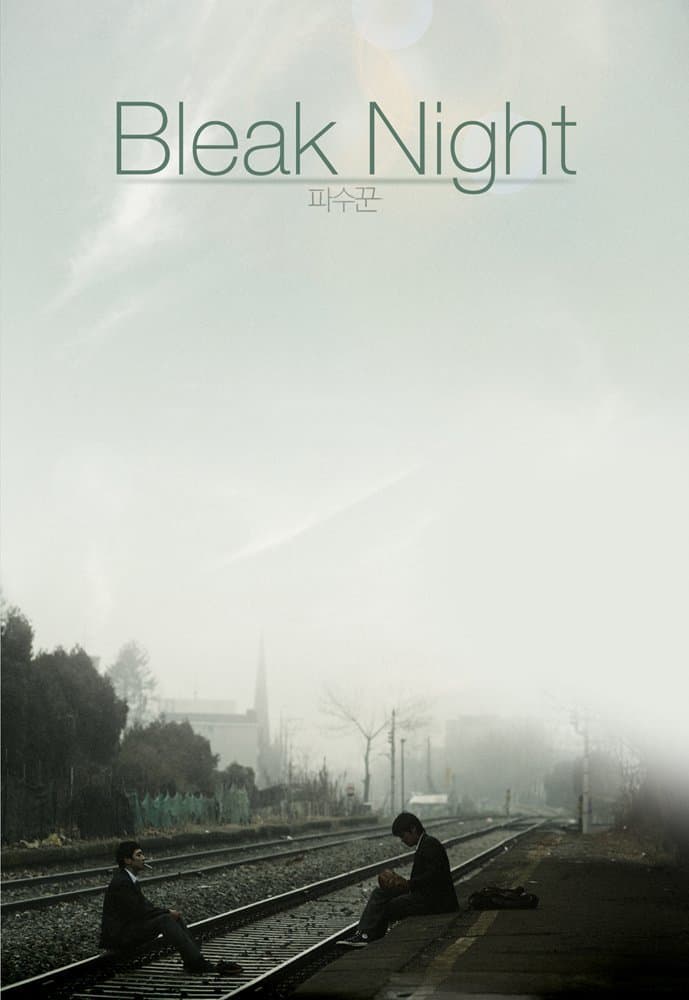
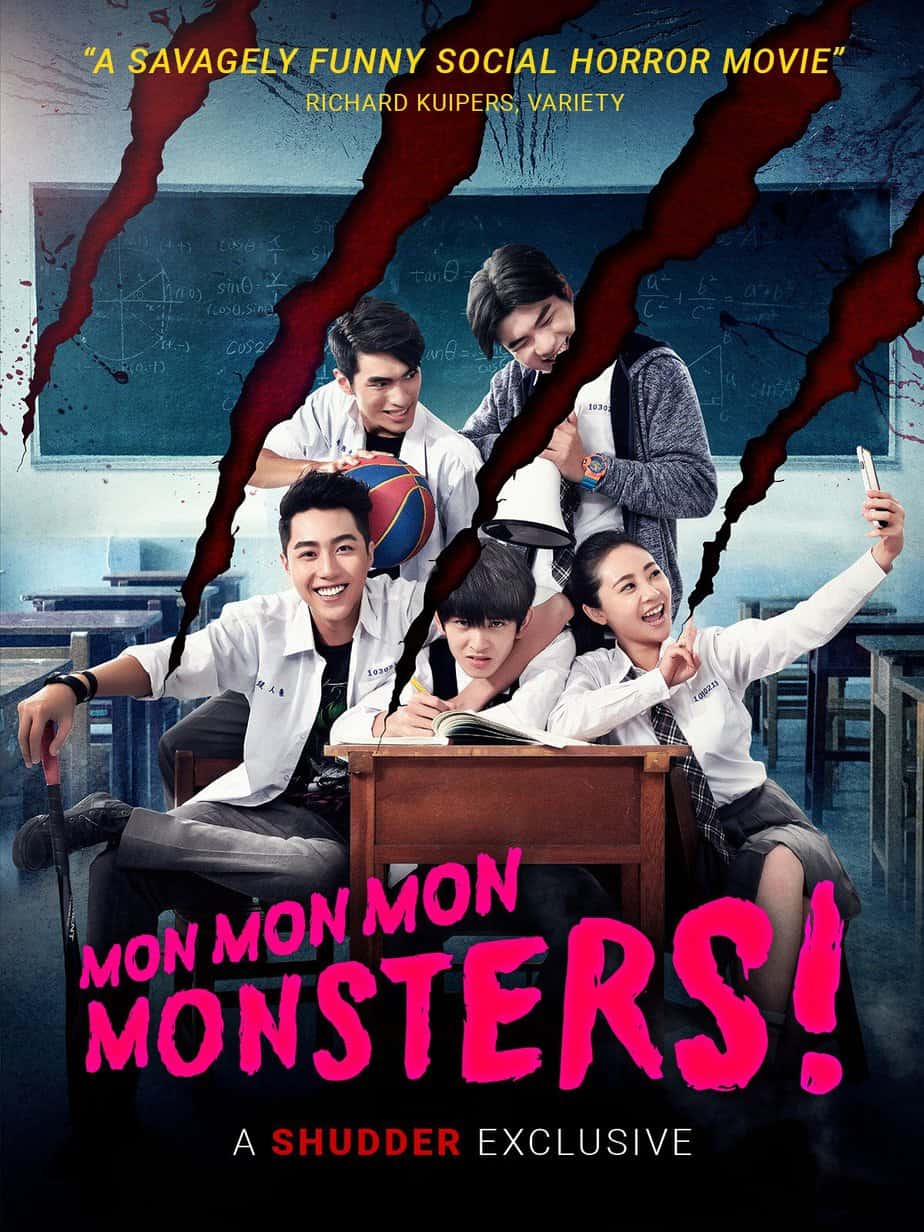













I heard someone say recently that there is nothing more terrifying than a group of teenage boys. Simply because boys at that age are so full of pride and surging testosterone and all want to outdo each other and impress each other any way they can, and that can so quickly and easily lead to anti-social behaviour and violence that gets way out of hand.
I brushed up against it a little when I was a teenage but I was smart enough to pull back and avoid those circumstances. But seeing how fast potentially fatal situations can arise during the course of general socialising among boys and young men certainly makes me wary of groups of them to this day.